|
|
|
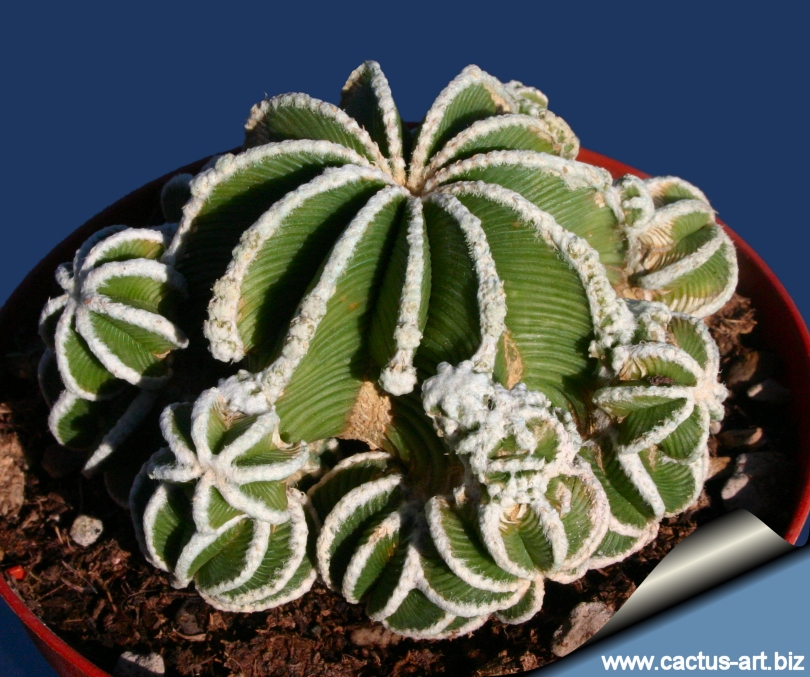
Aztekium hintonii forma prolifera is a very interesting free branching
plant.
|
|
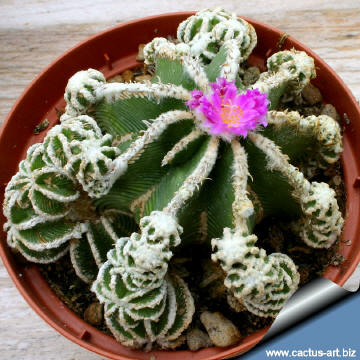 |
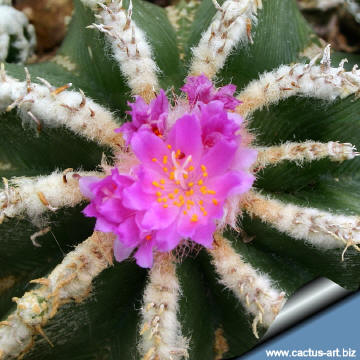 |
|
Note: This clone is similar - and often confused - with
A. hintonii forma mostruosa a highly proliferative
form that produces variable, monstrous and irregularly shaped
ribs with knobby-looking swellings. The monstrous form also
dichotomize or
crest easily, its
areoles have much more white
wool and it has more light
pruinose stems.
|
|
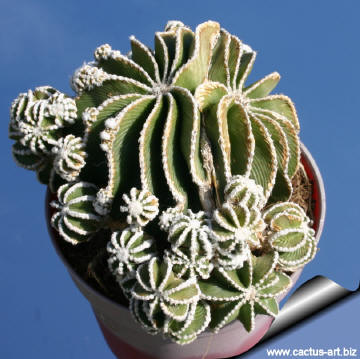 |
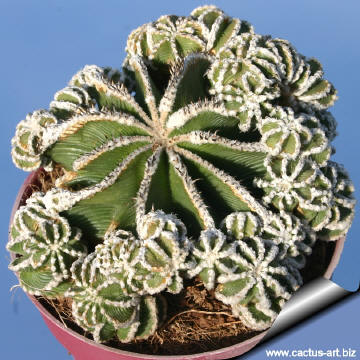 |
|
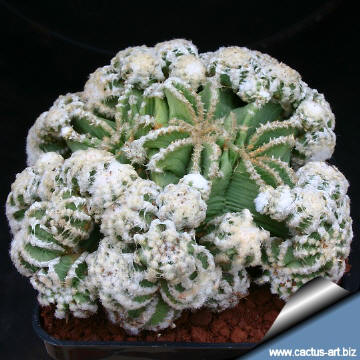
Forma mostruosa |
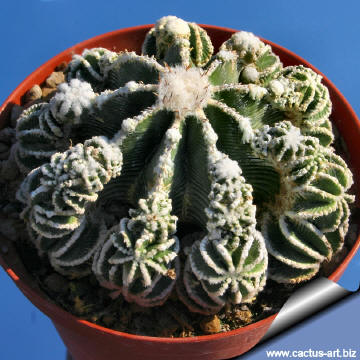
Forma prolifera
|
|
Photo of
conspecific taxa, varieties, forms and cultivars of Aztekium hintonii.
Advertising
|
|
|
|
|
|
Family:
Cactaceae (Cactus
Family)
Scientific name:
Aztekium hintoni Glass & Fitz Maurice , 1991
Forma prolifera (mostruosus)
Origin:
Garden origin (Nursery
produced cultivar)
Conservation status: Listed in
CITES appendix 2.
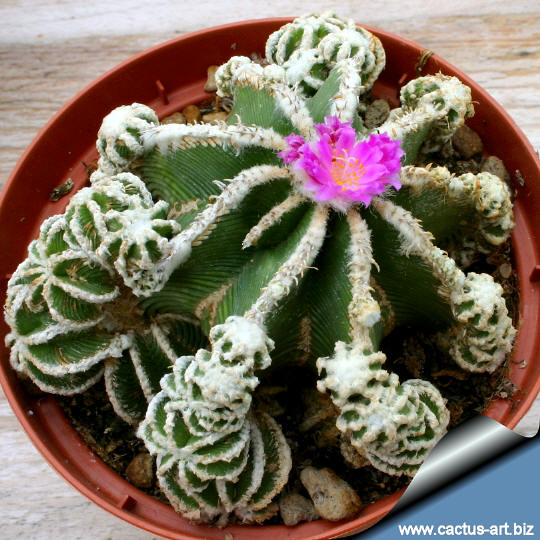
|
|
Description: The standard
A. hintonii
is a usually solitary greyish-green
globular to
subglobose
cactus, that rarely form a short
column reaching 20 cm by 10 cm in size. Its ribs have characteristic transverse
wrinkles and white and
woolly
areoles in youth.
The "forma prolifera" is a
genetically stable
mutation that produces an anomalous proliferation of shoots just from the
base
and occasionally at higher levels. As it grows it will form crowded
clumps formed by dozen of heads.
|
|
|
|
Cultivation: It is of slow growth, but not as slow as
A. ritterii. It usually takes several years for growth
to be noticeable. Needs good drainage and regular water in summer.
It should be dried out completely for its winter rest when it will
withstand temperatures down to to -4°C for short periods. It prefers
some shade.
Once a specimen is established on its own roots it is no trouble to
keep, and it becomes an easy plant to manage.
The plants are often grafted to enhance growth speed. They grow best in
full sun
or half shade, which will help to
maintain the lustre of the spines and plants compact. They are
prone to
mealy bug and
red spider mite.
Propagation: From
cuttings or preferably by
grafting. It It branchs enthusiastically,
and offsets are readily available. If you remove an offset , remember to let it dry for a
week or so, letting the wound heal (cuttings planted too
soon easily rot before they can grow roots), but it is
difficult to grow this plant on its
own roots
and also only few cutting will root.

|
|

 |
|